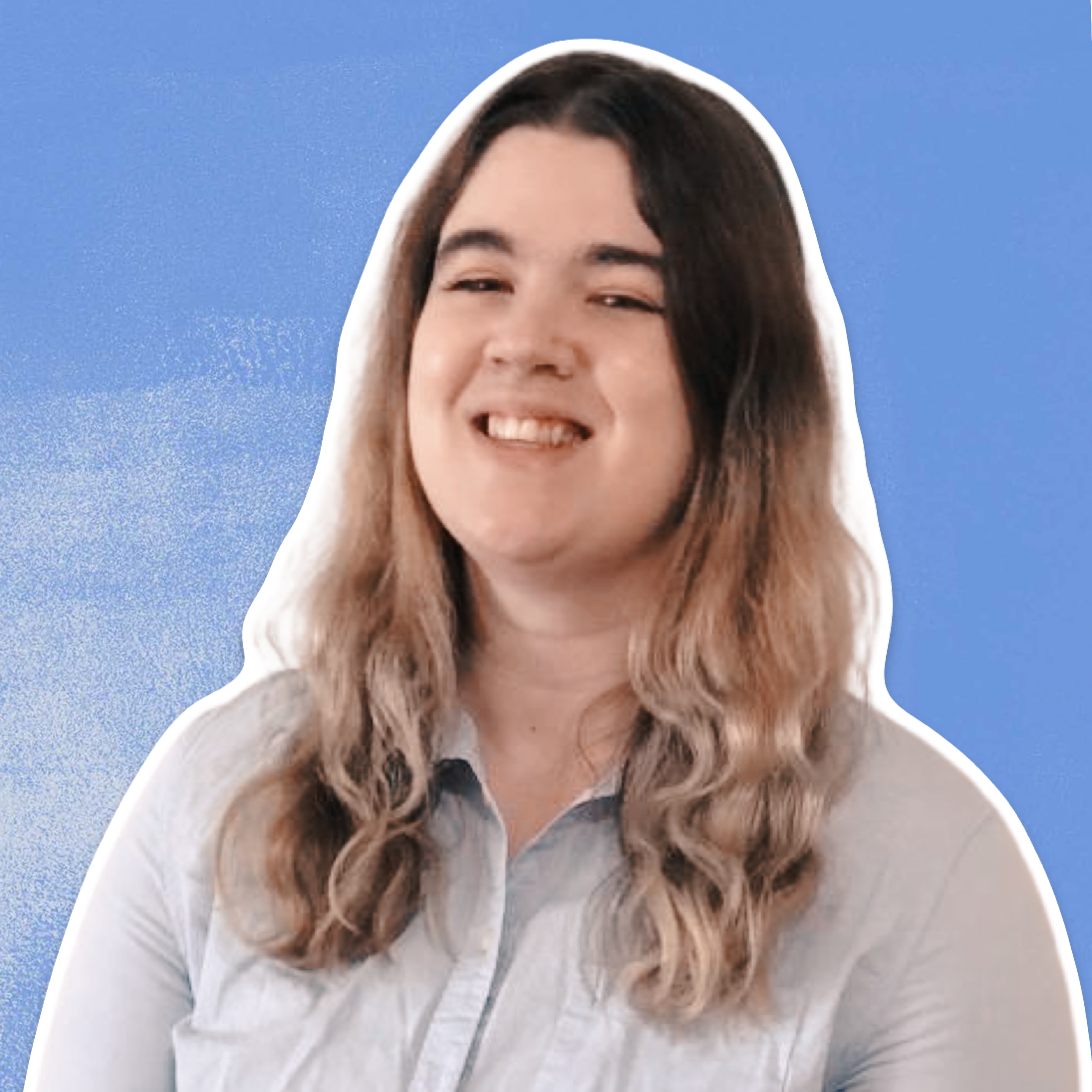
Darby Joyce
Content Marketing Coordinator
This September, students in the Kogod School of Business’s online MBA and MS in international relations and business programs went global with their lessons. Students in both programs traveled to Seoul, South Korea and Tokyo, Japan for immersion and extension courses, where they visited company sites, deepened their understanding of the link between business and culture, and got to know each other better along the way. We caught up with Kogod professor of marketing Sarah Mady, who led the courses and traveled with the students, to look back at some photos from the trip and give us a better idea of what goes into an immersion course.
Tokyo, Japan
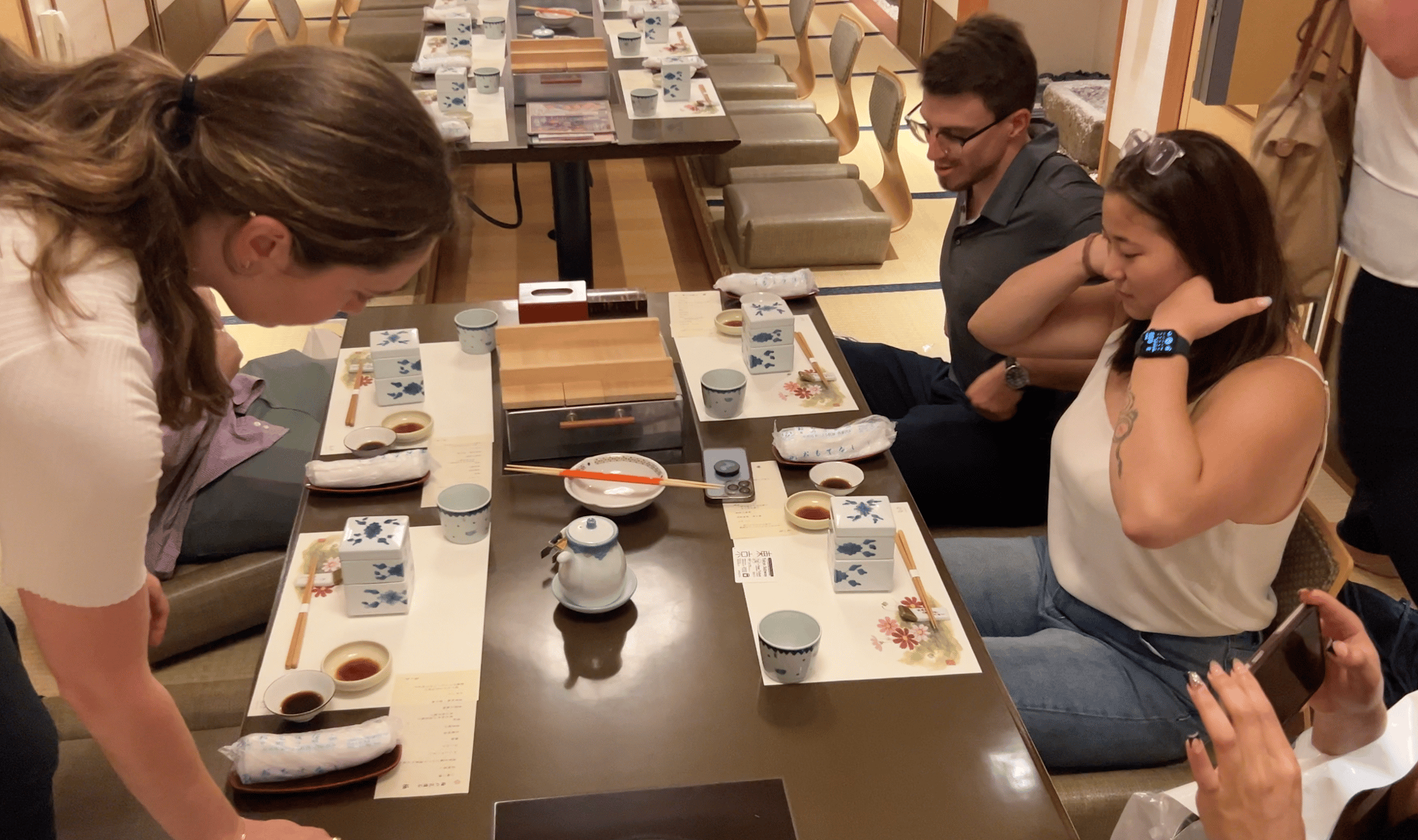
A thirteen-course traditional Japanese kaiseki dinner near Shibuya Crossing.
Mady: The kaiseki is a traditional thirteen-course dinner showcasing the highest etiquette of the world-renowned Japanese cuisine. Our party was ushered into a beautiful space and seated on the floor with our shoes off; the tradition is that one should be grounded closer to the floor to connect with others in an egalitarian and grounded manner. We were served an impressive array of courses with minimal explanation of what was in each one, although we did have an accompanying printout explaining each exquisite dish. The kaiseki was really a representation of what we call ‘high-context cultures,’ where the nonverbal cues and traditions are represented in every single course offering. With each part of the meal, you get a little bit more of that hospitality and progressively increase your involvement with the host.
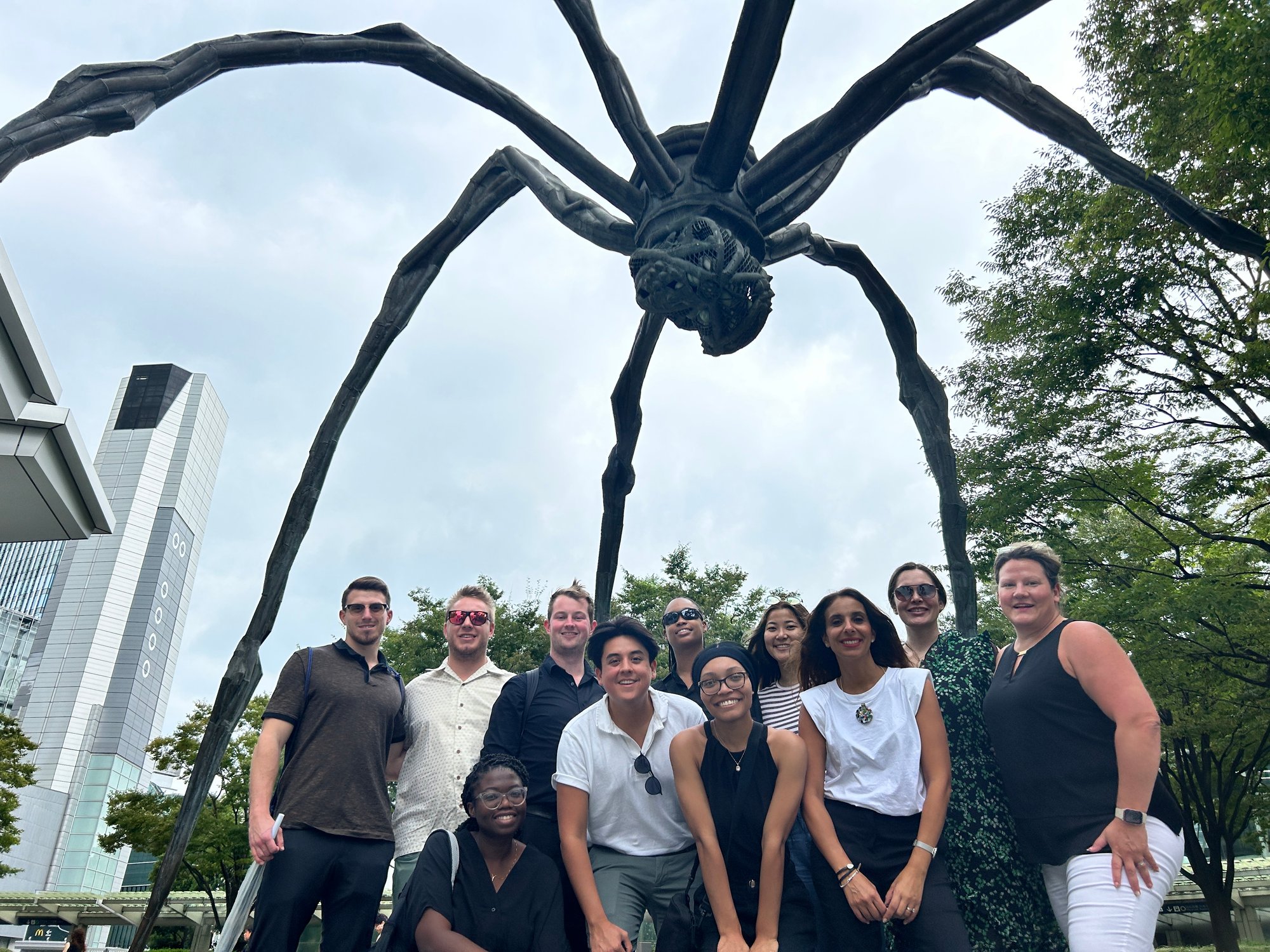
A group photo in Roppongi, Tokyo’s central business district, where students met with Edelman Tokyo.
We had an extended meeting with the actual president of the Japanese office, who gave us an incredible briefing about some of the relationships they establish and manage with both Japanese and global clients."
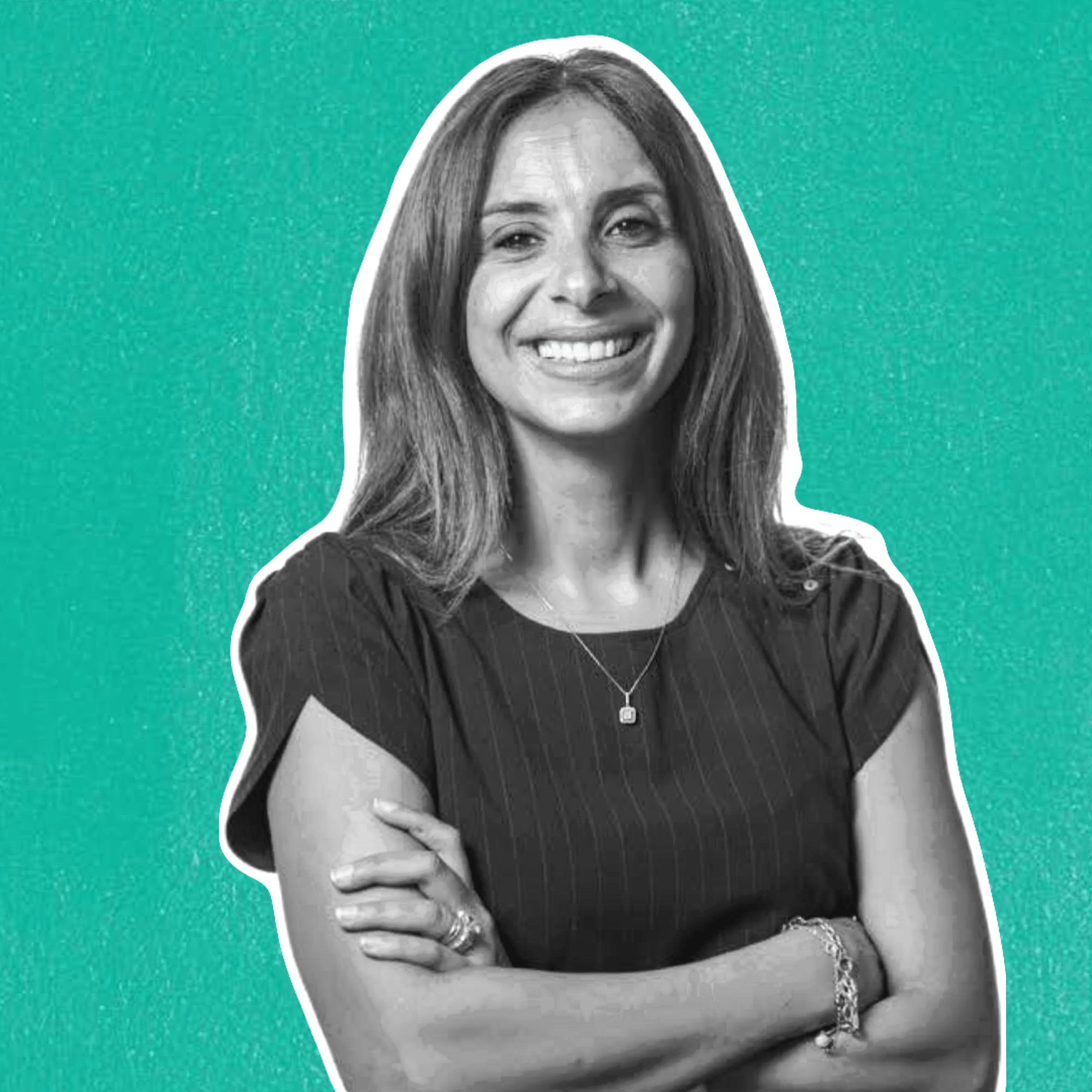
Sarah Mady
Professor of Marketing, Kogod School of Business
We learned a lot about how Edelman can give their clients great marketing and communication tools for their Japanese audiences while also expanding outside of Japan, the focus of our students’ cultural marketing projects.
The executives at Edelman found our visit to be very helpful as well, since our students have been studying how to advise Japanese companies on expanding beyond Japan to meet the growing demand in global markets. The students in this picture are working on three different Japanese companies, creating a marketing plan for each to expand into countries where they would find better target markets. The meeting went really well; the Edelman president and the spokespeople who worked with us were floored by how much our students knew about Japanese culture, the Japanese business environment, and the potential for industry expansions abroad. This was definitely a happy moment, where the students were basking in that vote of confidence before their next meeting.
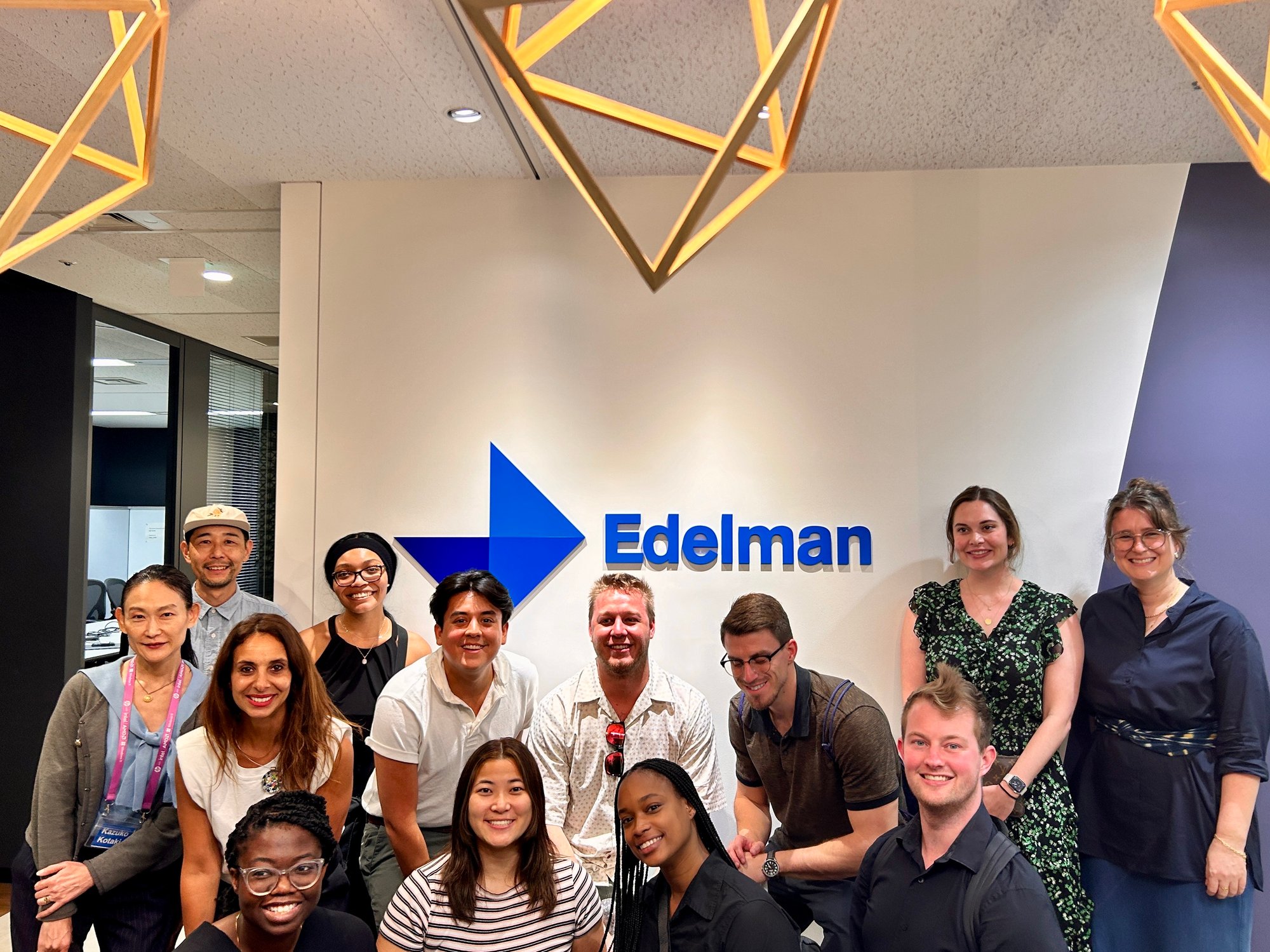
Group photo with the Edelman team.
Mady: This is the Edelman meeting itself! They set us up with representatives from their PR division, who explained clearly how PR looks very different in a Japanese communication space. There are very unique relationships that companies have to consider—such as the relationship with news media and news sources—that we’re not necessarily used to in the US. That was very helpful for our cross-cultural reference.
The gentleman on the back left, Head of Strategy, Edelman Japan, worked in the US for several years, and now that he’s back in Japan has noticed the different ways that Japanese clients and companies work. There’s a different model, where you need to create a campaign centered around trust. The speaker on the right, Associate Director of Corporate, also spoke about Edelman’s Trust Barometer, through which they look at how clients engage with PR initiatives. Essentially, clients will only engage with communication or PR companies if they really understand what trust means between the client and the company and, of course, how the consumer fits in. The role of culture continued to be the focus of our meeting.
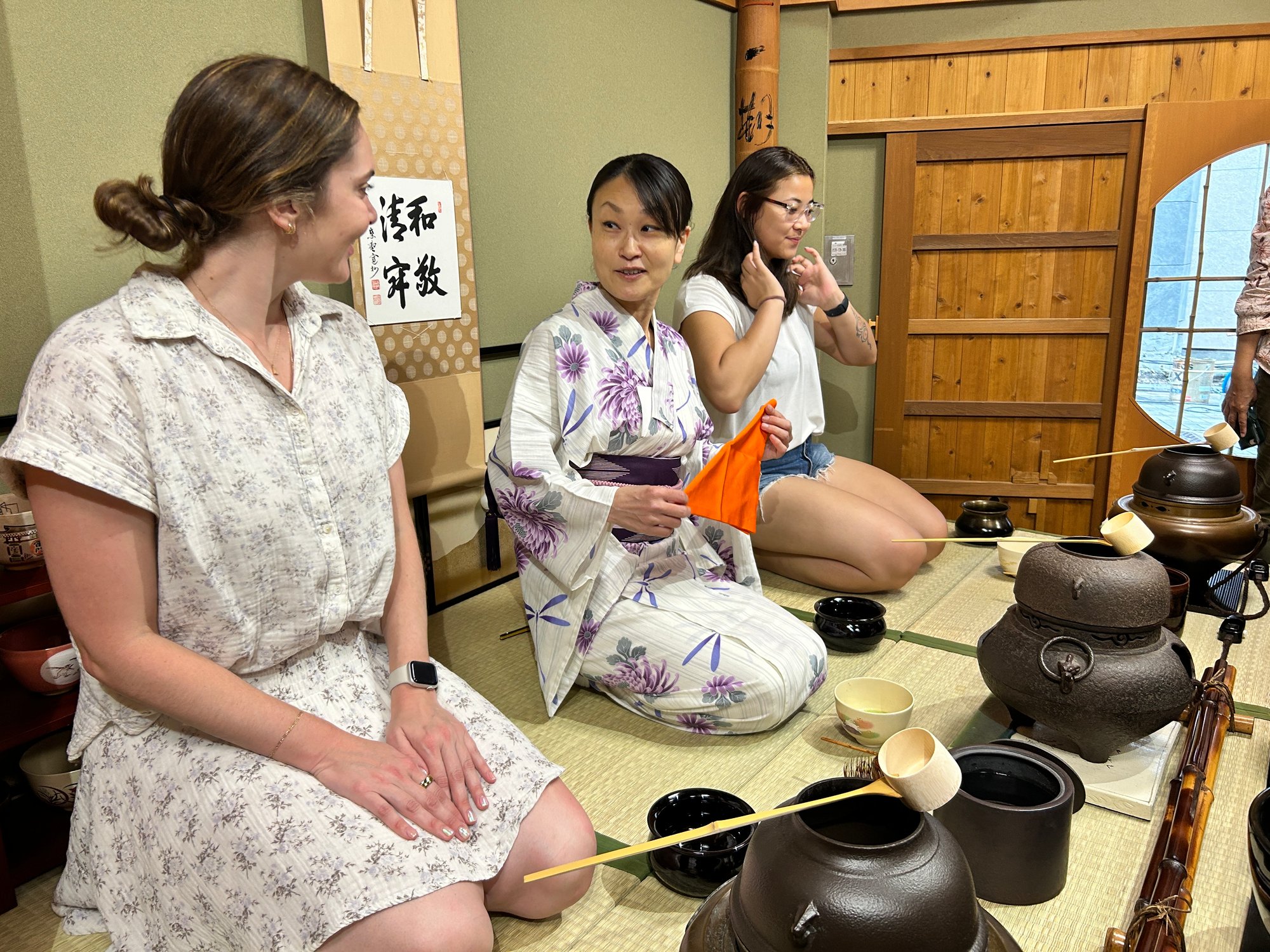
Students participating in a traditional Japanese tea ceremony in Tokyo’s famous Asakusa neighborhood.
We may have read about it in case studies, readings, and articles before the trip, but it was very meaningful how it translated into this ceremonial, traditional moment. It was something that we all found impactful, and thoroughly enjoyed."

Sarah Mady
Professor of Marketing, Kogod School of Business
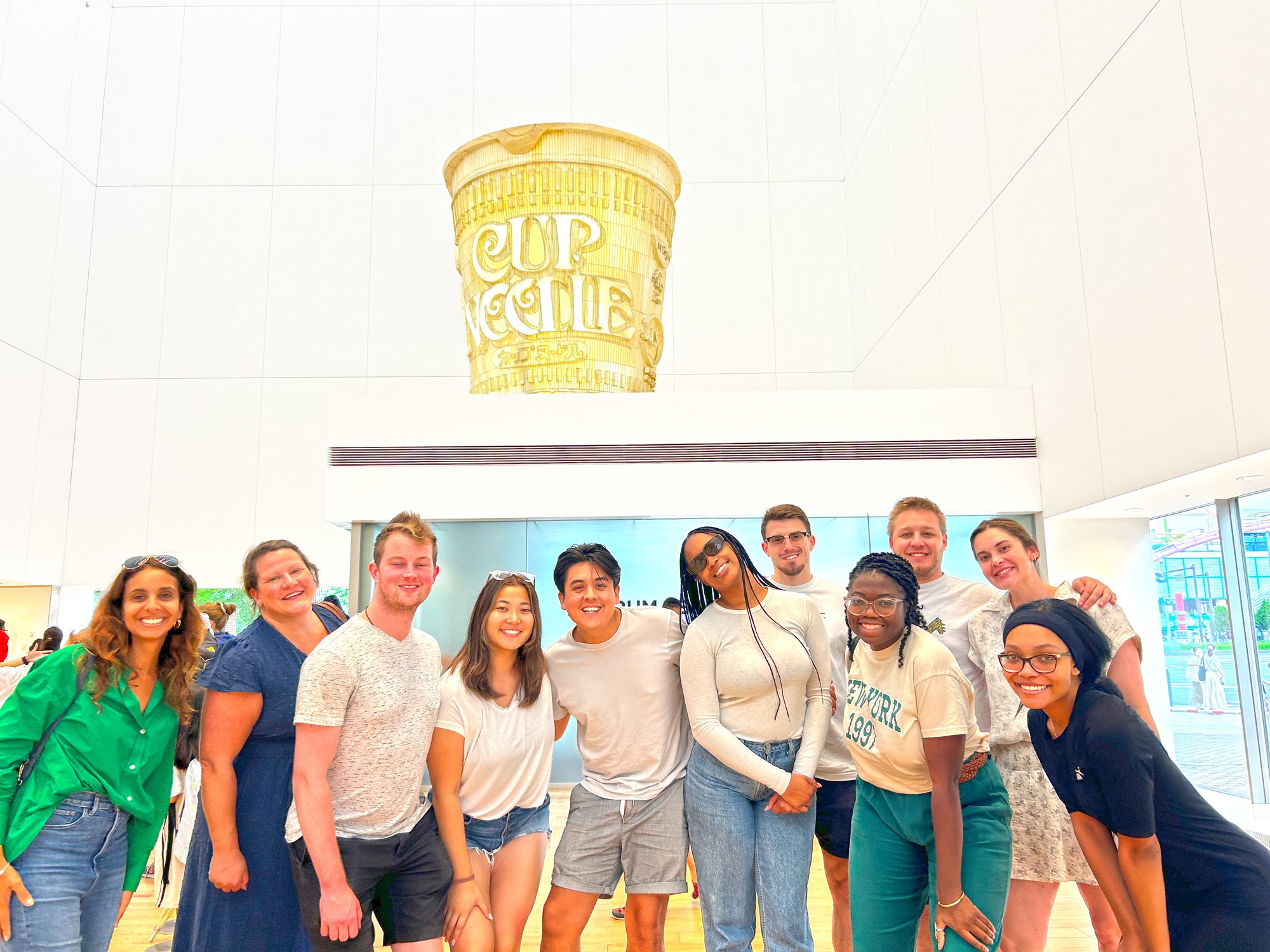
A group photo at the CupNoodles Museum in Yokohama, where students were able to craft their own cup of globally famous Cup Noodles Ramen.
Mady: We went to Yokohama, a major industrial and port city about forty-seven kilometers outside of Tokyo’s city center, where many Japanese headquarters and R&D centers are located. You can make your own noodle cup in this interactive museum, which was a wonderful experience. But we also learned a lot about the history of manufacturing in Japan, and how many companies that started after World War II needed a lot of governmental support. That support ultimately contributed to creating a new industry, which became one of its kind in the region and then was exported to the whole world. Cup Noodles is still one of the largest noodle exporters in the world, becoming a cultural icon in Japan. We really made the most of it; we made our own cups, and some of us flew home with them, and we also learned so much more than we expected.
Seoul, South Korea
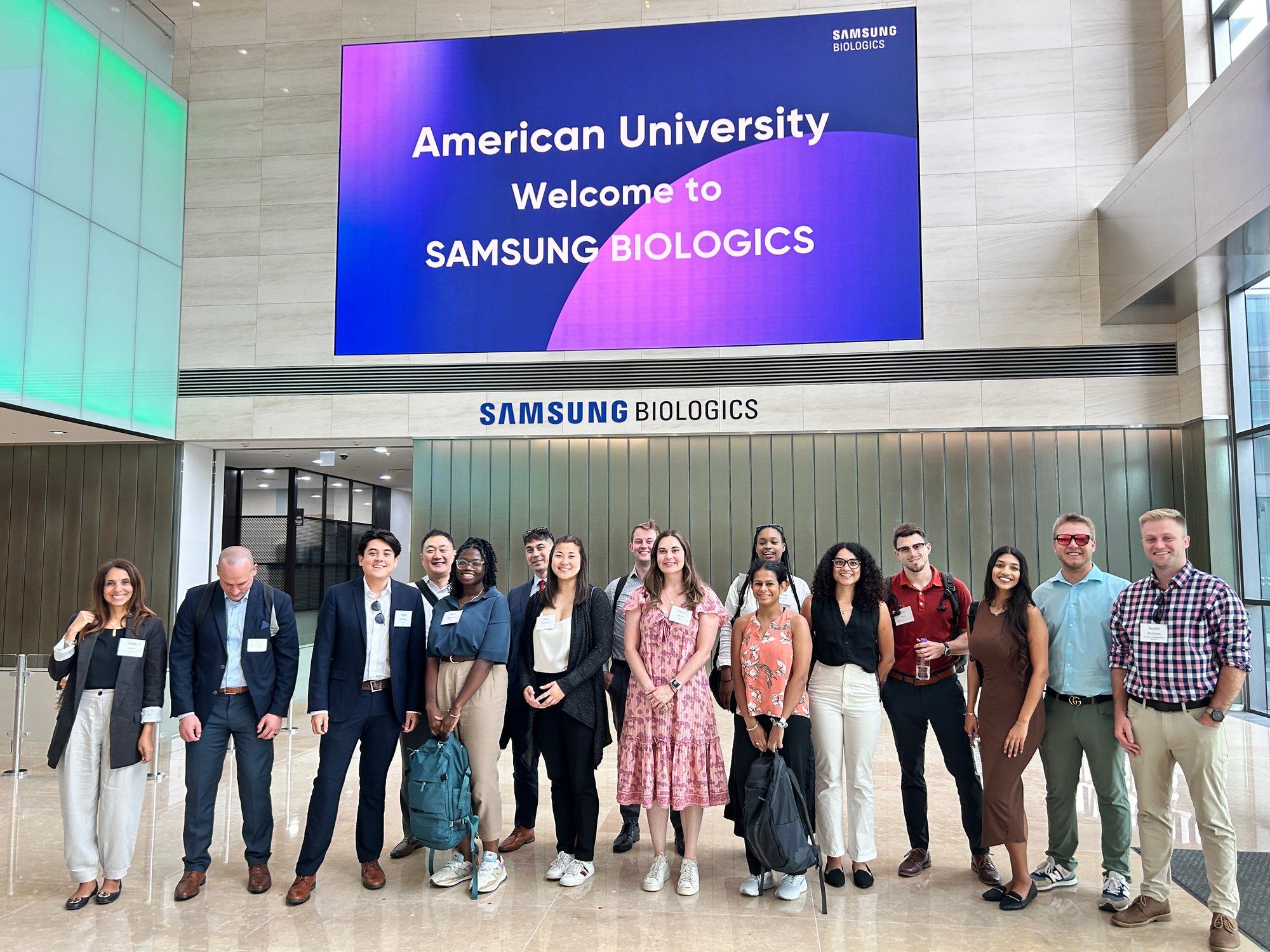
A group photo at Samsung Biologics.
Mady: One of our major site visits on this trip was Samsung Biologics, a subsidiary of Samsung that develops solely in what we call CDMOs (contract development and manufacturing organizations). We were briefed in a unique way on this visit, since not many students have visited before – in fact, they said that we were one of the first groups to come in since the COVID pandemic. This new factory location is one of the largest in the world moving into the technology of creating partnerships and alliances, both within Samsung and in other sectors and industries. They took us into the factory itself, and we saw how they’re laying plans for another factory which would be a cutting-edge science model for Samsung in Korea. It was pretty cool!
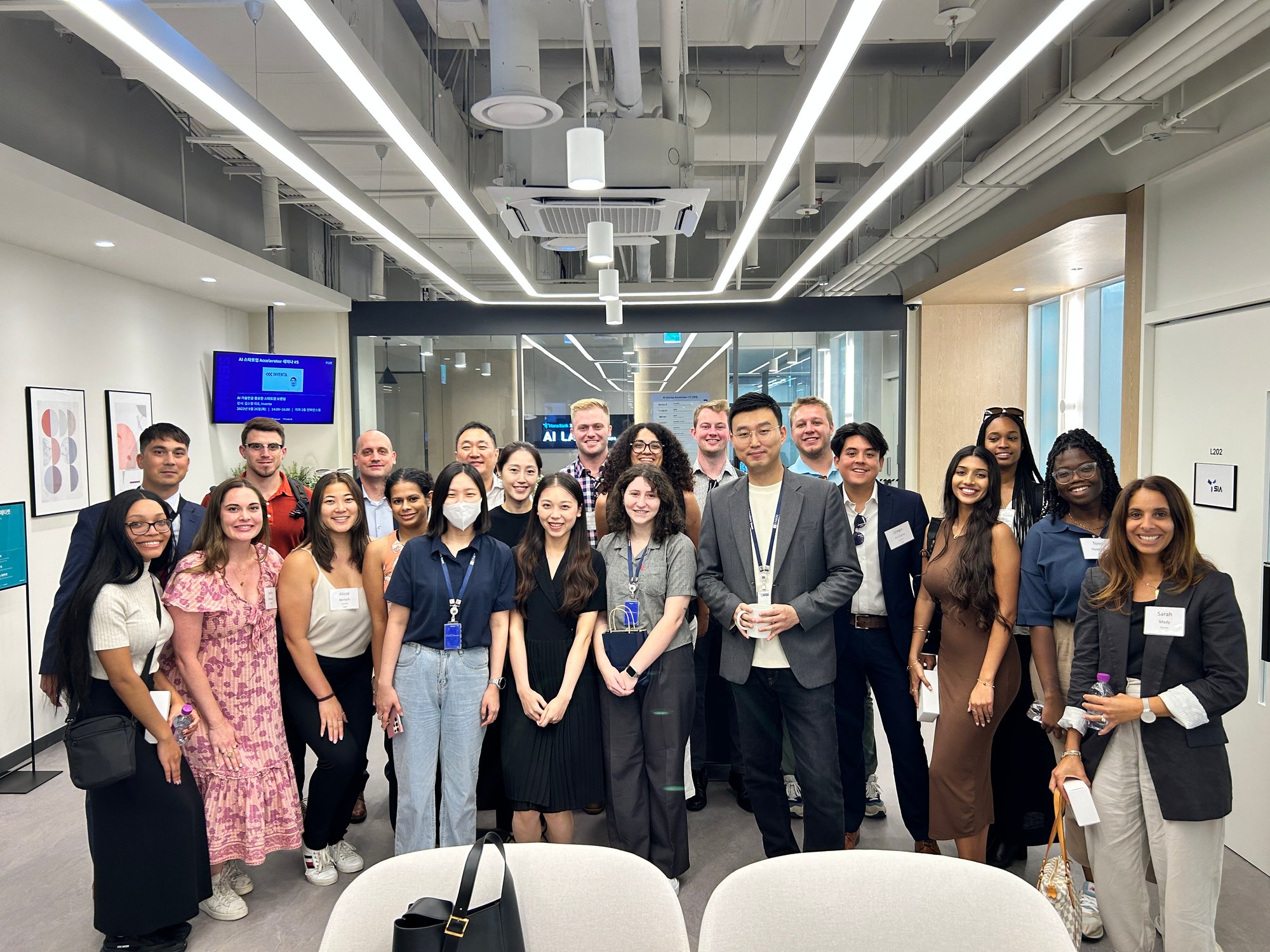
A group photo with the CEO of Union Pictures in Seoul.
Mady: Here we are meeting with a startup in the media business called Union Pictures. Our South Korean course is specifically about culture marketing, and country-of-origin effects, and how Korea exports its culture through industries such as K-pop and K-beauty in what is known as the “Korean Wave.” We met with this K-pop startup production company that is trying to create a space for smaller, up-and-coming artists. They told us how they support these artists using a lot of the tactics that we’ve studied, like influencer marketing and cultural marketing. They gave us excellent insights about the K-pop industry and how it is absolutely booming; in Korea, the region, and globally, but also how groups like BTS have become cultural ambassadors in which the government invests a lot behind the scenes. It was an excellent visit, and very insightful.
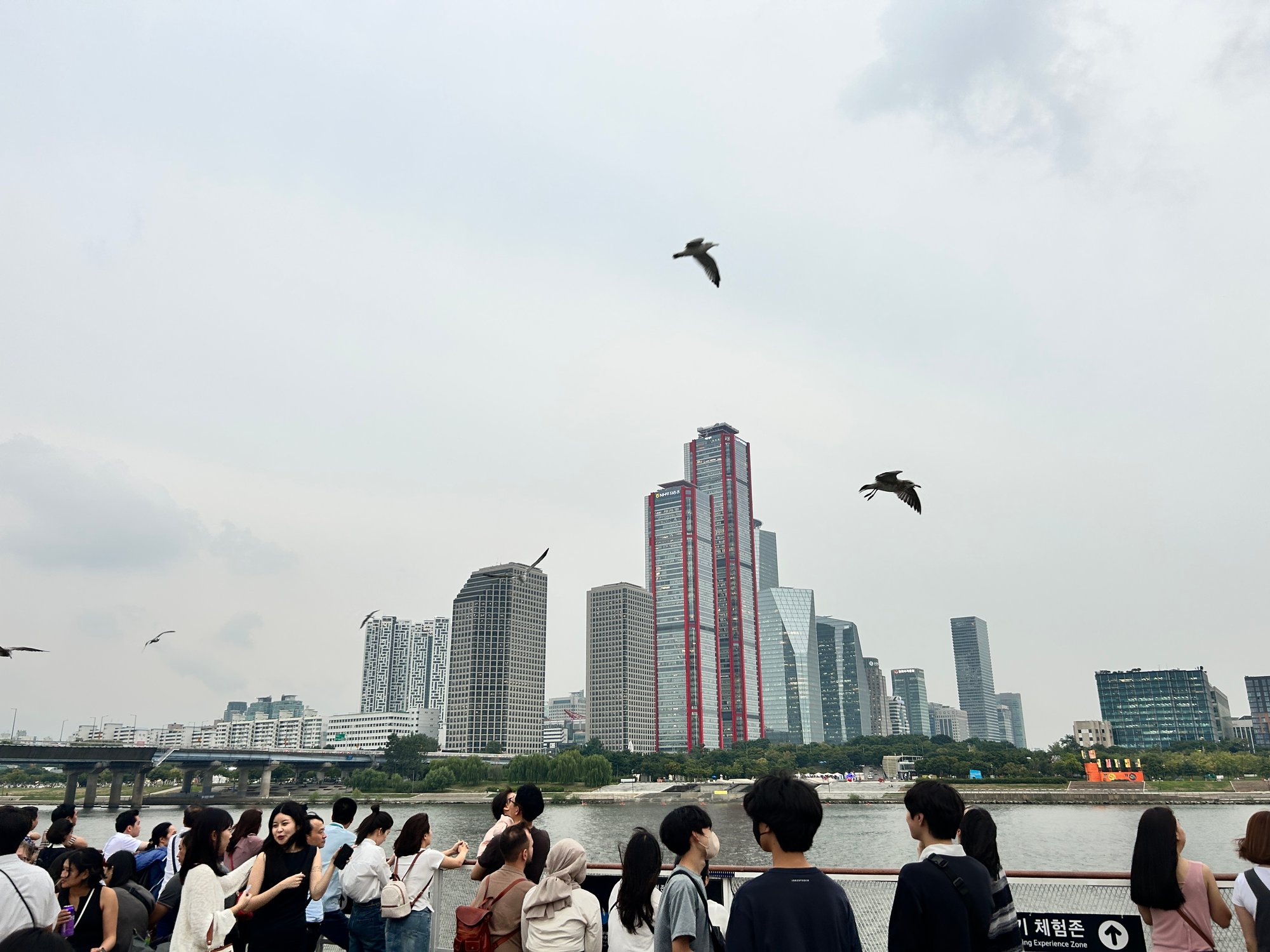
A view over one of Seoul’s skylines on the Han River Cruise.
Mady: During our downtime, we took a beautiful sunset cruise on the Han River. You can see the seagulls hanging around because they allowed you to feed them on the boat. That definitely left some folks a little unsettled.
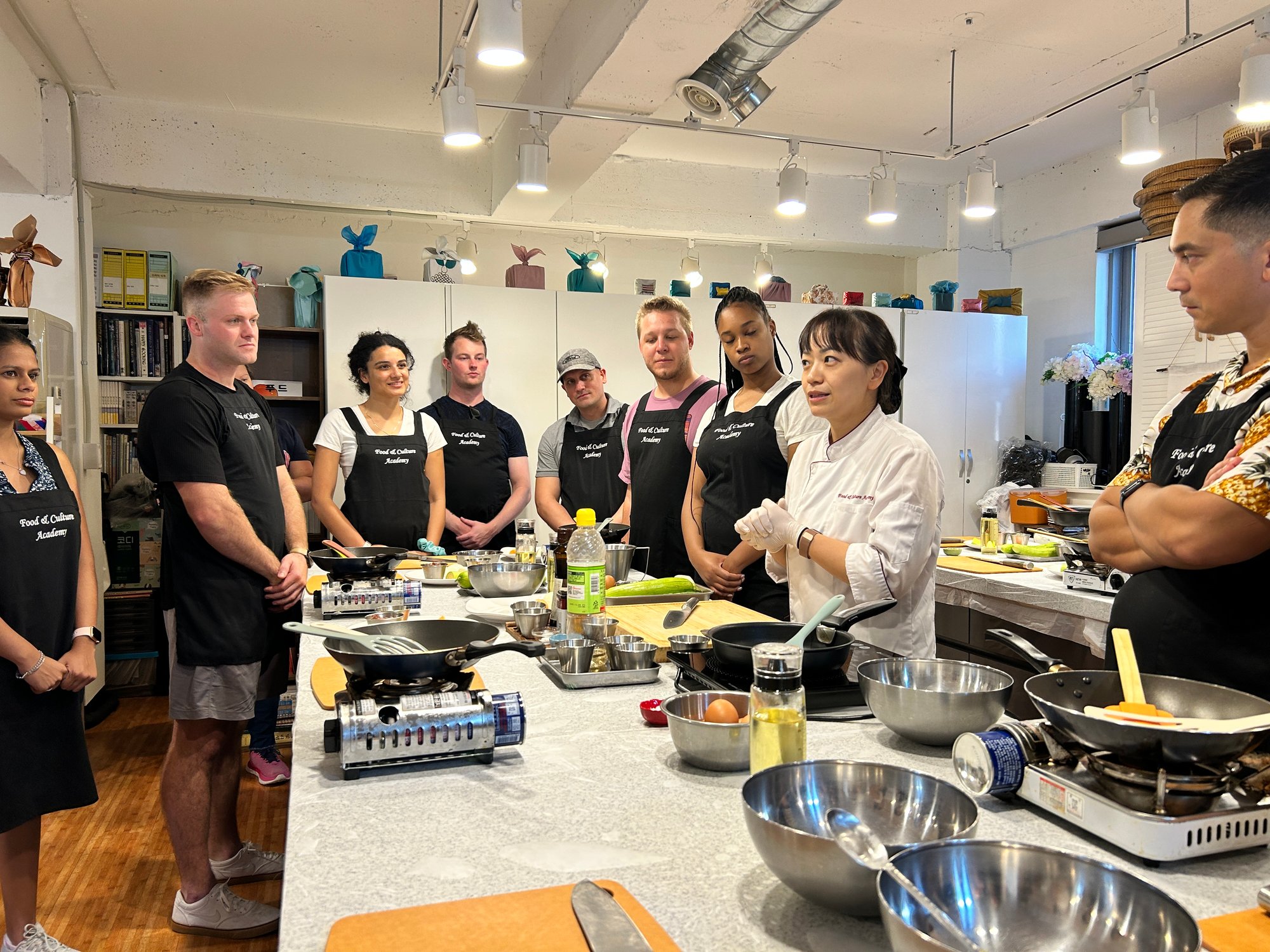
Students participating in a Korean cooking class.
